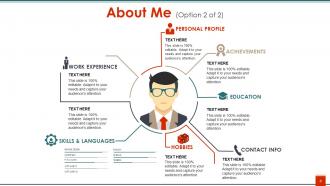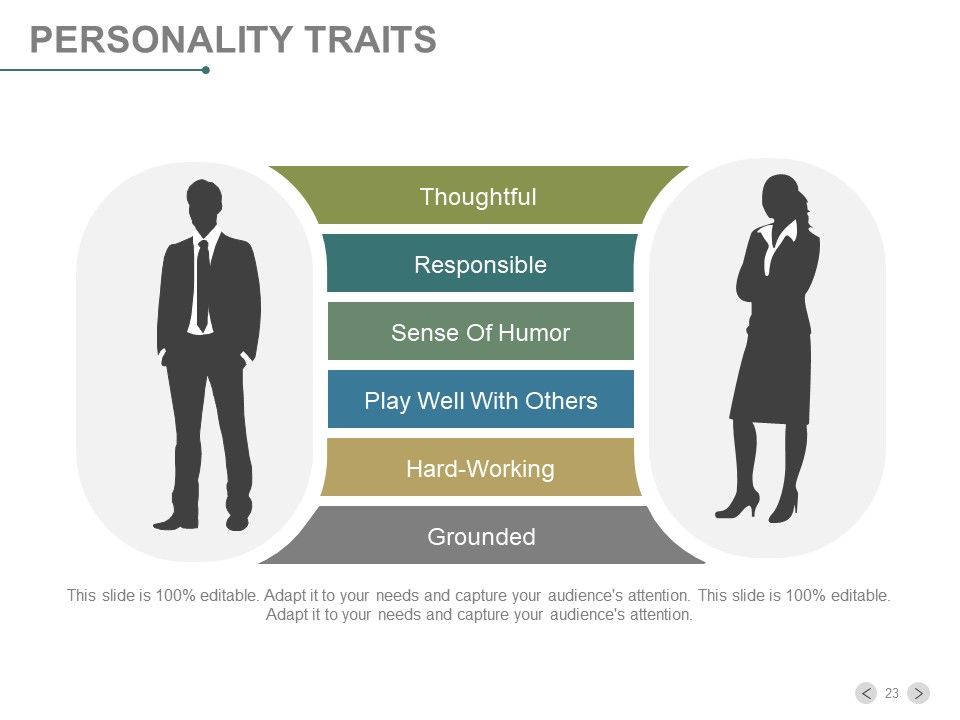Understanding the Importance of a Strong Introduction

When stepping onto a stage or presenting to a group, the first few moments are crucial. A strong introduction sets the tone and engages your audience right away. Think of it as your first handshake—firm, confident, and memorable. If you capture their attention early, you create a connection that encourages them to listen actively.
Why is this so important? Well, consider this:
- Establishes Credibility: A well-crafted introduction highlights your qualifications and sets the stage for your expertise.
- Builds Rapport: Sharing a personal story or interesting fact can make you relatable and human, fostering a sense of trust with your audience.
- Frames the Presentation: It gives context to your talk, outlining what the audience can expect and why it matters to them.
Moreover, a strong introduction can ease your own nerves, helping you feel more confident as you transition into the body of your presentation. Remember, this is your moment to shine, so make it count!
Also Read This: Introducing the Improved Dailymotion Downloader for 2024
Key Elements of an Effective Self-Introduction

Now that we understand the importance of a strong introduction, let’s dive into the key elements that can make your self-introduction impactful.
Here’s a simple formula to structure your introduction effectively:
- Greeting: Start with a warm greeting. A simple “Hello everyone!” or “Good morning, thank you for being here!” sets a positive tone.
- Your Name: Clearly state your name. It may seem obvious, but clarity is key! “I’m Jane Doe” is straightforward and effective.
- Your Role or Expertise: Briefly mention your professional role or what you bring to the table. For example, “I’m a marketing specialist with over five years of experience in digital strategy.”
- Purpose of the Presentation: Clearly outline the purpose of your talk. What are you discussing, and why should they care? “Today, I’ll be sharing effective techniques for boosting your online presence.”
- Engaging Hook: Use a personal anecdote, a surprising statistic, or an intriguing question to hook your audience. For instance, “Did you know that 70% of consumers are more likely to buy from brands that provide personalized experiences?”
Here’s a quick example of an effective self-introduction:
Hello everyone! I’m Jane Doe, a marketing specialist with over five years of experience in digital strategy. Today, I’ll be sharing effective techniques for boosting your online presence. But first, let me ask you: have you ever felt overwhelmed by the sheer number of choices online? You’re not alone.
By combining these elements, your introduction will not only inform but also engage your audience right from the start, making them eager to hear what you have to say next!
Also Read This: How to Hack a Facebook Account – What You Need to Know on Dailymotion
3. Tailoring Your Introduction to Your Audience

When it comes to presentations, one size does not fit all. Understanding your audience is crucial for crafting an introduction that resonates with them. Think of it as tuning a musical instrument — you want the right notes to hit just right!
Start by considering who will be in the room. Are they industry experts, newcomers, or a mix of both? For instance, if you’re presenting to seasoned professionals, you might want to dive straight into advanced topics and use jargon they’ll appreciate. On the other hand, if your audience includes beginners, you’ll want to start with the basics to ensure everyone is on the same page.
Here are a few tips for customizing your introduction:
- Research Your Audience: Use tools like LinkedIn to learn about their backgrounds. This can help you identify common interests or challenges.
- Relate with Personal Stories: Share a relevant experience that connects you to the audience. For example, if you’re speaking to a group of teachers, talk about a memorable lesson you learned as a student.
- Use Humor When Appropriate: A light-hearted joke that aligns with the audience's experiences can break the ice and make you more relatable.
Moreover, consider the context of your presentation. A corporate setting might call for a more formal approach, while a community gathering could allow for a relaxed and friendly tone. Tailoring your introduction creates an instant rapport, making it easier for your audience to engage with you from the get-go.
Finally, don’t forget to practice! Rehearsing in front of someone who represents your audience can provide valuable feedback. Adjust based on their reactions to ensure your introduction strikes the right chord.
Also Read This: How to Make Delicious Coffee – Quick Recipe Guide on Dailymotion
4. Techniques for Captivating Your Audience from the Start

Captivating your audience right at the beginning of your presentation sets the tone for everything that follows. You want to grab their attention and keep them eager to hear more. Here are some effective techniques to do just that:
- Start with a Powerful Quote: A relevant quote can set the stage for your topic. For example, if you’re talking about innovation, you might start with Steve Jobs’ quote: “Innovation distinguishes between a leader and a follower.”
- Ask a Thought-Provoking Question: Engage your audience immediately by asking a compelling question. For instance, “Have you ever wondered why some teams burn out while others thrive?” This invites them to think and engage right away.
- Use a Striking Visual: A captivating image or video can create a strong first impression. Imagine starting your presentation on environmental sustainability with a powerful visual of a polluted ocean versus a thriving ecosystem.
Additionally, storytelling is a potent tool. Begin with a short, relatable story that ties into your main point. This technique not only captures attention but also helps convey your message in a memorable way. For example, sharing a personal journey about overcoming challenges can inspire your audience to connect with your narrative.
Lastly, remember your body language. Standing tall, making eye contact, and using gestures can convey confidence and energy, which will draw your audience in. If you look excited about your topic, they will too!
By employing these techniques, you’ll not only grab your audience’s attention but also lay the groundwork for a successful presentation. So, get out there and shine!
Also Read This: How to Activate Subtitles on Dailymotion: A Simple Tutorial for Video Accessibility
5. Practicing Your Introduction for Confidence
When it comes to delivering an engaging self-introduction, practice is your best friend. You might be thinking, “But I know what I want to say!” Well, knowing is one thing, but delivering it confidently is another. The difference often lies in how much you've rehearsed.
Here are some effective ways to practice your introduction:
- Mirror Practice: Stand in front of a mirror and present your introduction to yourself. This helps you to observe your body language and facial expressions. Are you smiling? Are your gestures natural?
- Record Yourself: Use your phone or a camera to record your introduction. Play it back to identify areas for improvement—tone, pacing, or clarity. You might be surprised by what you notice!
- Practice with a Friend: Gather a trusted friend or colleague and present your introduction to them. Ask for feedback on clarity and engagement. They can provide insights you might not notice.
- Timed Sessions: Set a timer to practice your intro within a specific timeframe. This helps you stay concise and focused, ensuring you cover everything important without rambling.
Don't forget to vary your practice environment as well. You might feel more comfortable at home, but practicing in a more formal setting—like a classroom or a conference room—can help simulate the actual presentation experience. The key is to practice often and in different contexts, so you’re prepared for anything!
Finally, try to visualize the room, the audience, and the atmosphere as you practice. This mental preparation can ease anxiety and boost your confidence. Remember, confidence comes from being well-prepared, so put in the time, and you’ll shine!
6. Common Mistakes to Avoid in Self-Introductions
Even the best of us can fall into traps when introducing ourselves. Here are some common mistakes that can undermine your efforts and how you can avoid them:
- Being Too Vague: It’s easy to slip into generalities, but this can make you forgettable. Instead of saying, “I work in marketing,” try “I specialize in digital marketing strategies that boost brand visibility for small businesses.”
- Overloading with Information: While you want to be informative, bombarding your audience with too many details can be overwhelming. Stick to 2-3 key points about yourself that you want to highlight.
- Ignoring Body Language: Your words are important, but so is how you say them. Avoid crossing your arms, fidgeting, or looking down. Stand tall, smile, and maintain eye contact to convey openness and confidence.
- Failing to Tailor Your Introduction: One size doesn’t fit all! Adjust your introduction based on the context and audience. For a formal business meeting, a more professional tone is necessary compared to a casual networking event.
- Rushing Through: It’s natural to feel nervous, but rushing can make you stumble over words or lose your audience’s attention. Take a deep breath and speak at a comfortable pace.
By being aware of these common pitfalls, you can navigate your self-introduction smoothly and leave a lasting impression. Remember, the goal is to connect with your audience, so aim for clarity and authenticity!
 admin
admin








